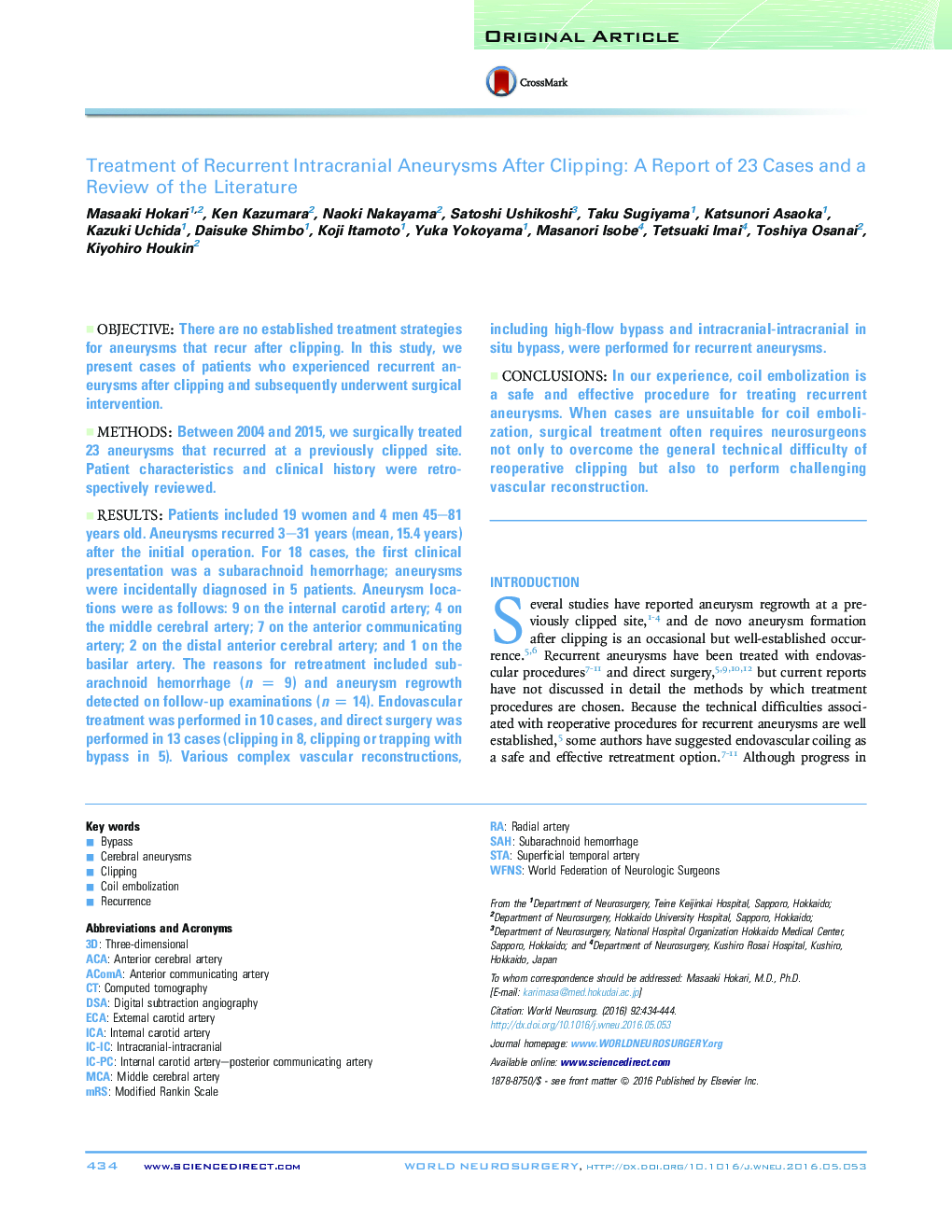| Article ID | Journal | Published Year | Pages | File Type |
|---|---|---|---|---|
| 3094730 | World Neurosurgery | 2016 | 11 Pages |
ObjectiveThere are no established treatment strategies for aneurysms that recur after clipping. In this study, we present cases of patients who experienced recurrent aneurysms after clipping and subsequently underwent surgical intervention.MethodsBetween 2004 and 2015, we surgically treated 23 aneurysms that recurred at a previously clipped site. Patient characteristics and clinical history were retrospectively reviewed.ResultsPatients included 19 women and 4 men 45–81 years old. Aneurysms recurred 3–31 years (mean, 15.4 years) after the initial operation. For 18 cases, the first clinical presentation was a subarachnoid hemorrhage; aneurysms were incidentally diagnosed in 5 patients. Aneurysm locations were as follows: 9 on the internal carotid artery; 4 on the middle cerebral artery; 7 on the anterior communicating artery; 2 on the distal anterior cerebral artery; and 1 on the basilar artery. The reasons for retreatment included subarachnoid hemorrhage (n = 9) and aneurysm regrowth detected on follow-up examinations (n = 14). Endovascular treatment was performed in 10 cases, and direct surgery was performed in 13 cases (clipping in 8, clipping or trapping with bypass in 5). Various complex vascular reconstructions, including high-flow bypass and intracranial-intracranial in situ bypass, were performed for recurrent aneurysms.ConclusionsIn our experience, coil embolization is a safe and effective procedure for treating recurrent aneurysms. When cases are unsuitable for coil embolization, surgical treatment often requires neurosurgeons not only to overcome the general technical difficulty of reoperative clipping but also to perform challenging vascular reconstruction.
